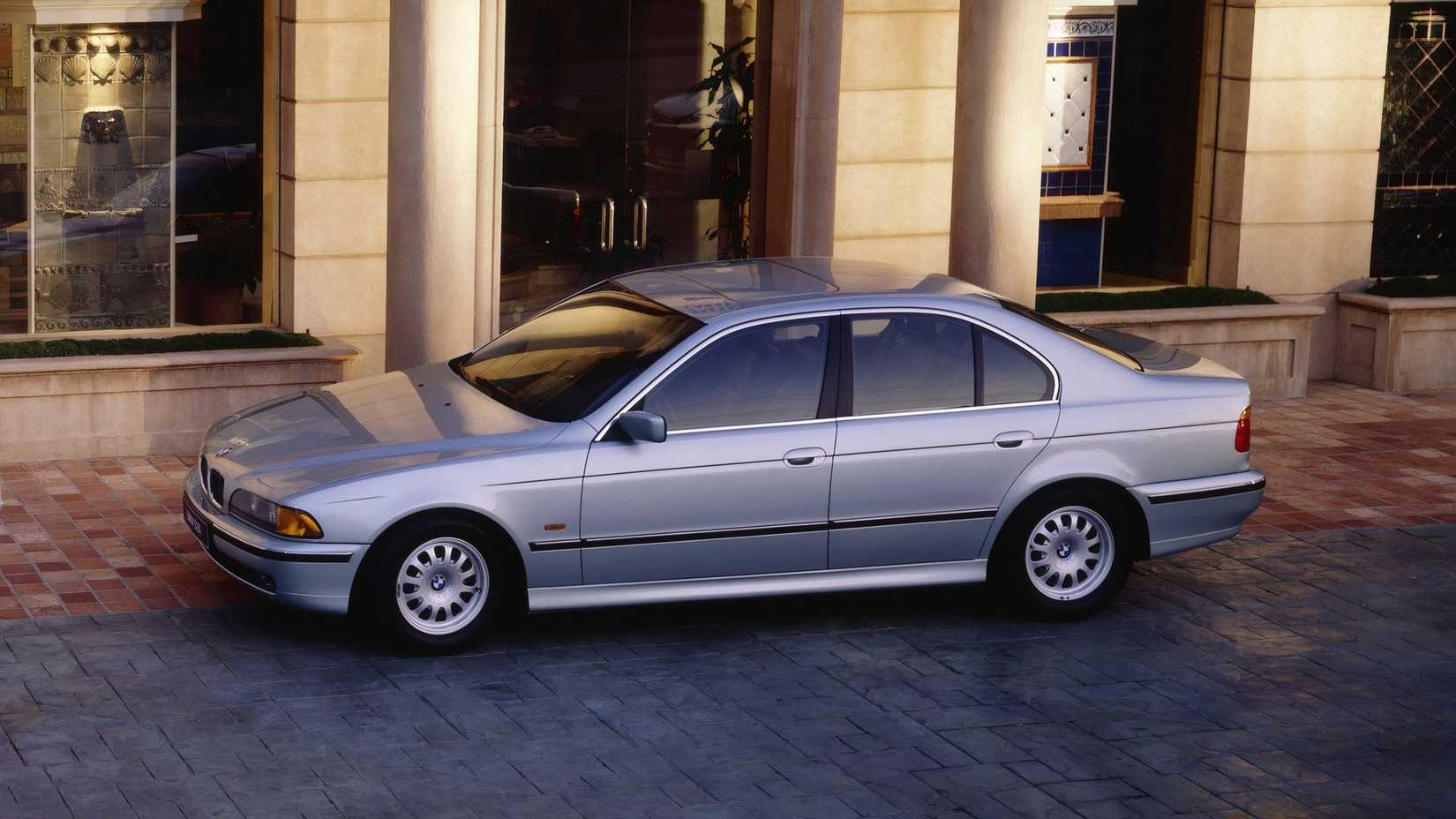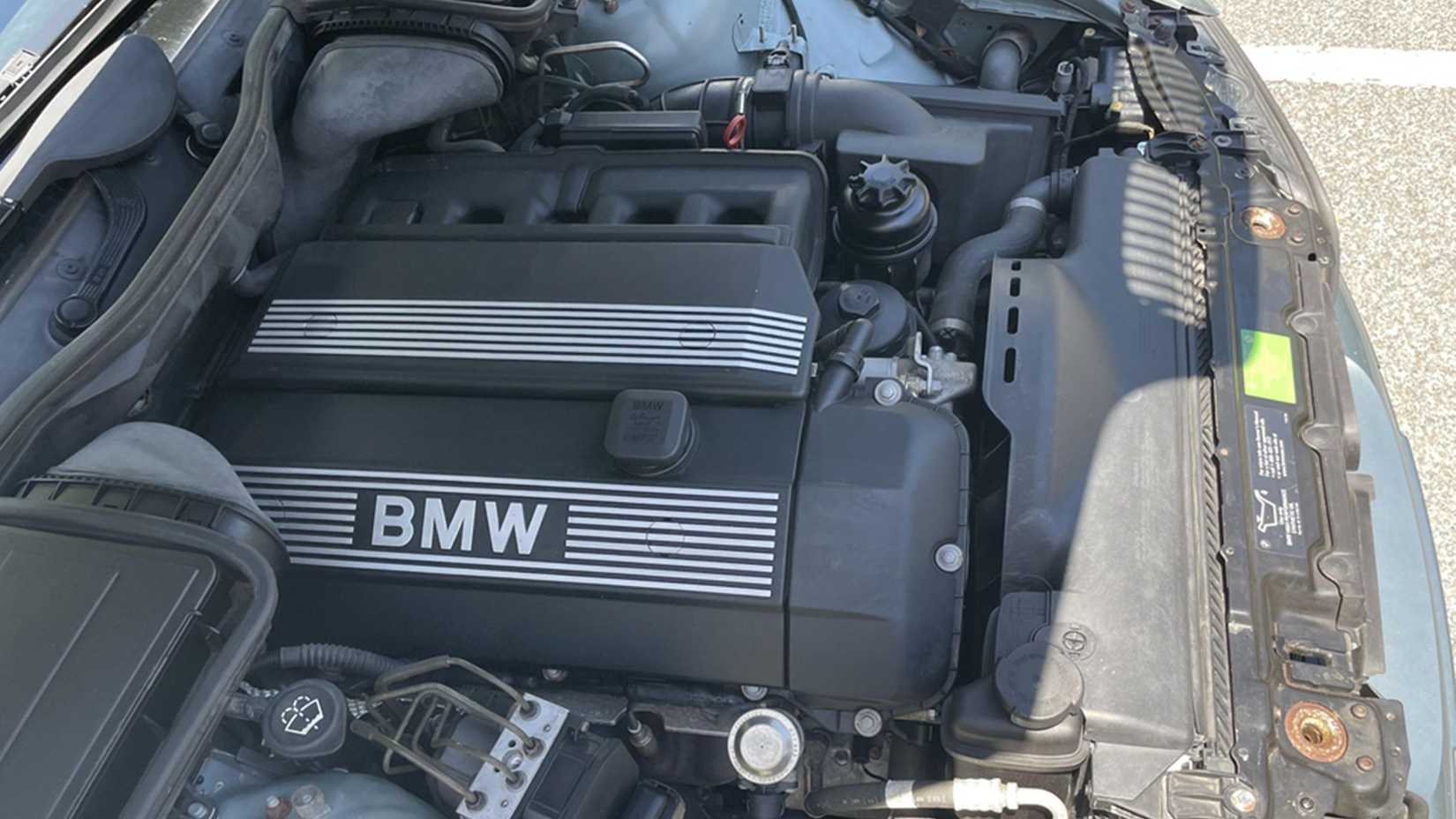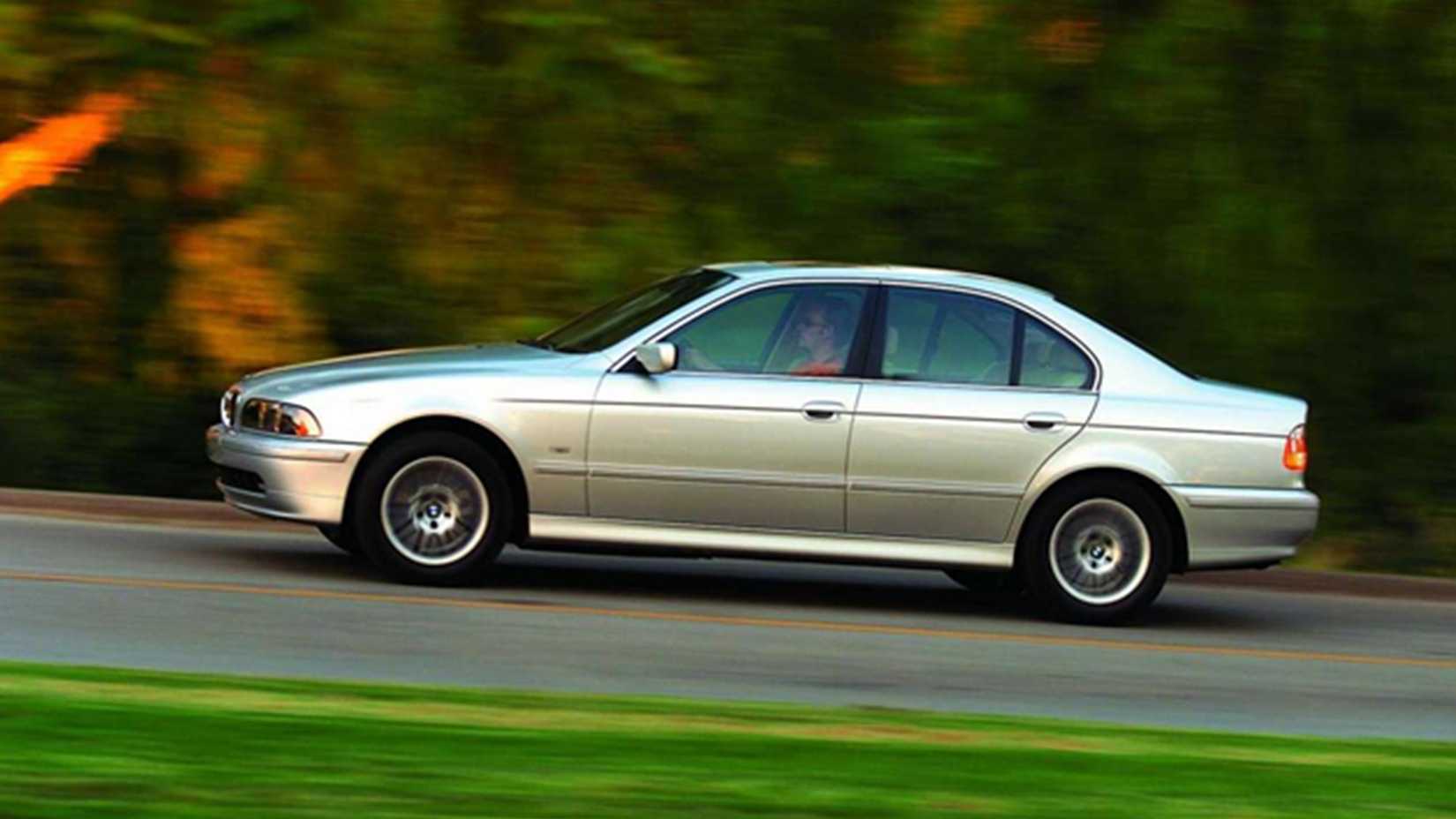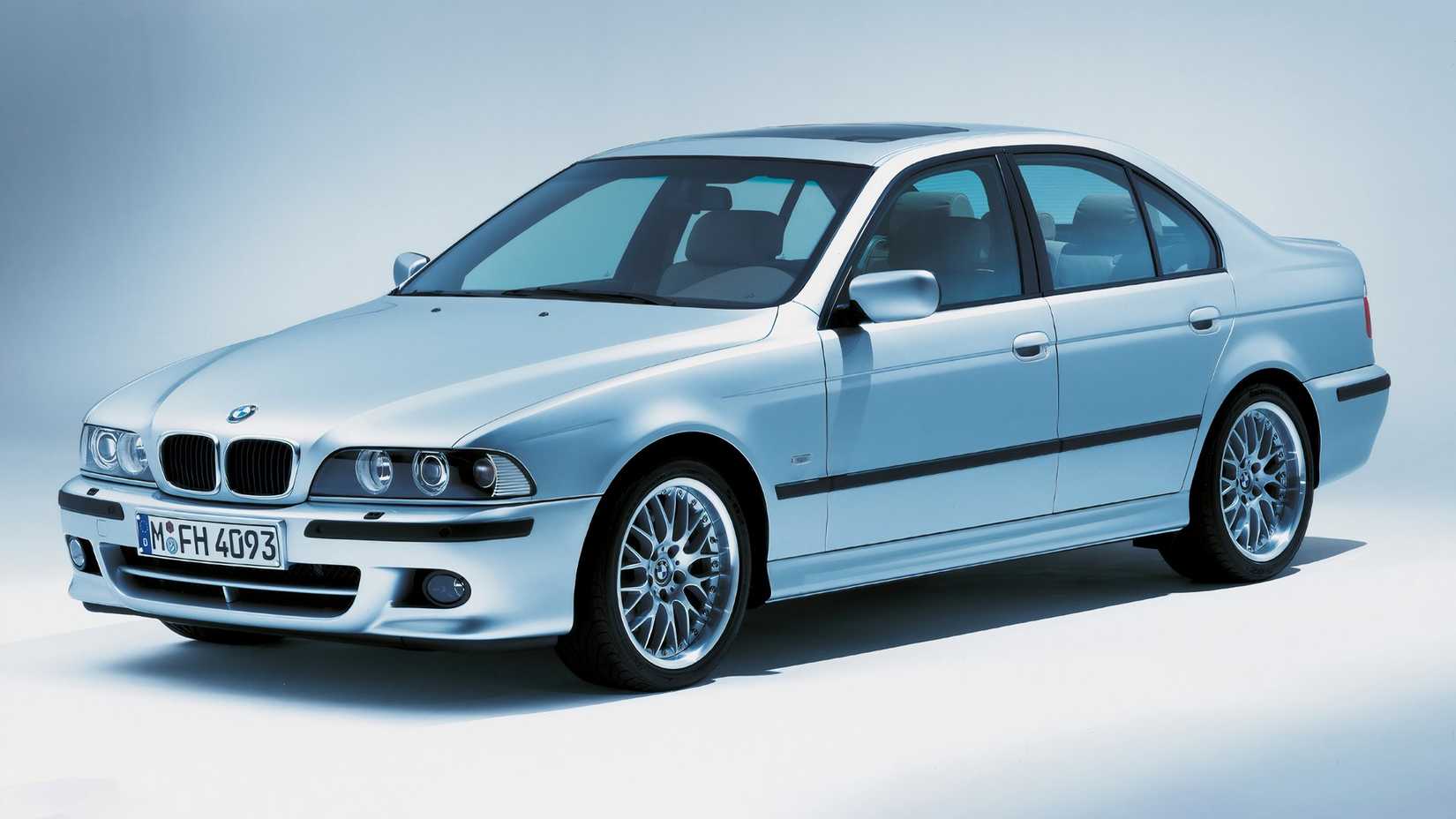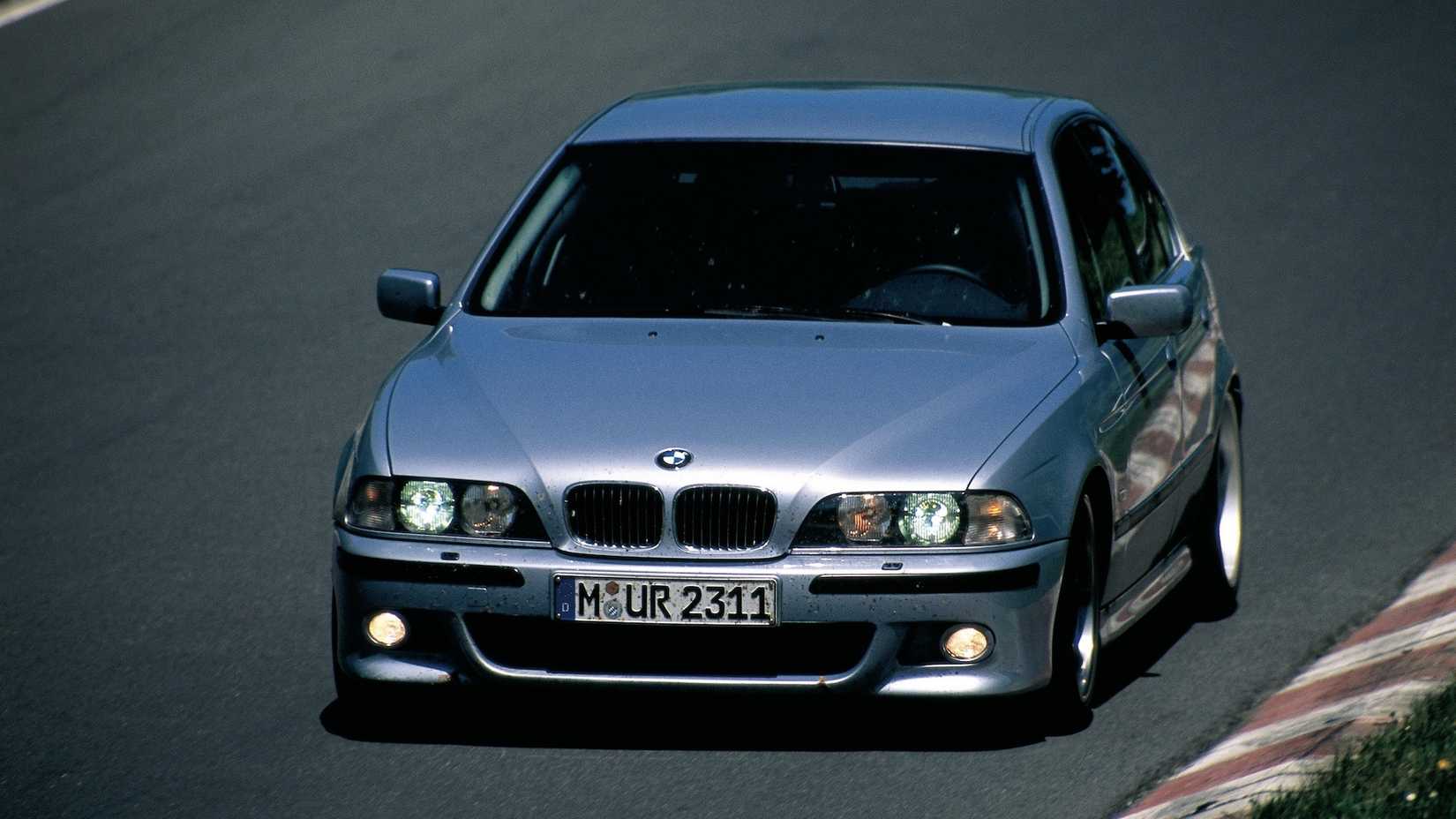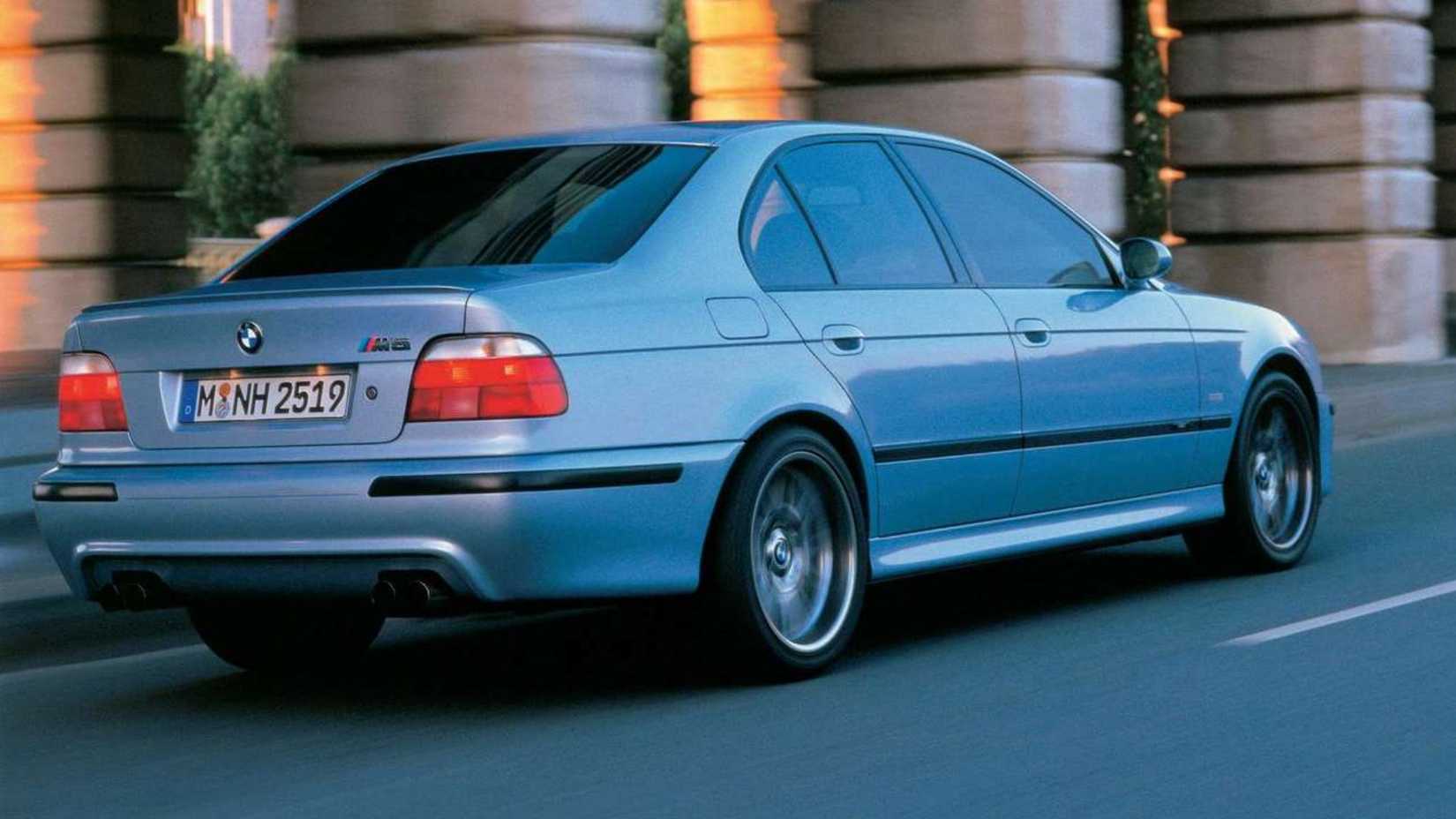When enthusiasts talk about sports sedans, the E39 BMW M5 often tops the list. It’s a car that perfectly blends performance, refinement, and that classic BMW driving feel. By the late ‘90s, BMW’s M Division realized they’d pushed the naturally aspirated straight-six engines of earlier M5s as far as they could. Turbocharging wasn’t yet on the menu, so the engineers went all in with a new approach: a naturally aspirated 4.9-liter V8 that sent a feisty 400 horsepower to the rear wheels.
It’s a thrilling setup, no doubt — precise, fast, and unmistakably BMW. The only catch? The E39 M5’s value has held strong and, in some cases, climbed steadily over the last several years. For many gearheads, that means it’s now more of a dream than a practical purchase. But all is not lost — there’s a more affordable BMW sports sedan that delivers a similarly satisfying punch without emptying your bank account, keeping your pulse racing every time you put it to the test.
The E39 5 Series Was A Step Into The Modern Age For The Famous Nameplate
BMW’s 5 Series has long held a special place in the hearts of driving enthusiasts. Since its debut in the early 1970s, it blended premium styling and build quality with BMW’s signature engaging driving dynamics. It was the kind of car that could ferry your family comfortably on long highway stretches, yet still spring to life on a twisty back road. The M5 may have claimed the crown as the range-topper in the mid-1980s, but even the more modest 5 Series variants could surprise with their poise and performance when pushed.
The fourth-generation E39, introduced in 1995, marked a turning point. Its design moved away from the sharp, boxy lines of previous generations to a more modern, rounded aesthetic. BMW also packed in a range of safety features, while clever use of aluminum in the chassis and bodywork kept weight in check — giving drivers a car that felt agile and responsive without compromising comfort.
| 2000-2003 BMW 530i | |
|---|---|
| Engine | 3.0L NA I6 |
| Transmission | 5-speed Auto, 5-speed Manual |
| Power | 225 hp |
| Torque | 214 lb-ft |
| 0-60 mph | 7.1–7.4 seconds |
| Top Speed | 128 mph |
| Average Used Value | $12,760 |
Plenty Of Engine Options Were Available
Beyond styling and safety, BMW put a lot of effort into refining the driving experience of the E39 5 Series. One big upgrade was the introduction of rack-and-pinion steering, which made cornering sharper and more responsive. Under the hood, BMW offered a range of reliable straight-six engines, catering to different tastes and budgets. At the entry level sat the 2.0-liter I6 520i, while V8-powered models like the 535i, 540i, and of course the M5, held the performance crown. Nestled in between was the 530i, a model that combined spirited driving with everyday usability.
The 530i arrived around 2000, effectively replacing the 528i, which was phased out in 2001. The key difference was the engine: the 530i came with a 3.0-liter inline-six, up from the 2.8-liter used in the 528i. Its production run was relatively brief, as the E39 generation gave way to the E60 5 Series in 2003. Despite its short stint, the 530i has earned a reputation as a well-balanced, driver-friendly BMW — offering much of the thrill of the M5 without the sticker shock.
Used 530is Are A Steal In 2025
For those who love the E39 5 Series driving experience but don’t want to foot the bill for a V8, the 530i is a smart alternative. V8 models not only carry a higher purchase price but also come with heftier running costs, making the 530i a more affordable yet fun option. In 2025, it’s possible to snag a low-mileage manual example with the optional M-Sport package for well under $20,000. According to Classic.com, the average auction sale price sits around $12,760, which feels like a steal for a car with this pedigree.
Take, for example, a 2002 Slate Green 530i with 61,000 miles that recently crossed the block on Cars and Bids. It came equipped with the M-Sport package and a five-speed manual, and had a clean title to boot. While it showed the usual minor wear and tear of a two-decade-old car, nothing a little detailing couldn’t remedy. The car sold for $13,500, giving buyers a clear picture of the type of bargains available if you’re patient and know where to look. It’s proof that you don’t need to spend M5 money to enjoy a proper E39 sports sedan experience.
The Manual/M-Sport Pack Combo Is Well Worth Having
To get the most out of the 530i’s sharp handling, a manual gearbox is highly recommended — and pairing it with the M-Sport package takes the driving experience up a notch. Beyond the more aggressive styling, which includes 17-inch M-Sport alloy wheels and an M aerodynamic body kit, this package brings a stiffer, M-tuned suspension and supportive sports seats that hold you in place during spirited driving.
Inside, you’re not missing out on creature comforts. The 530i comes with heated electric leather seats, a heated leather steering wheel, cruise control, and an electrically folding sunroof. Add automatic climate control and a Dolby-enhanced sound system, and you’ve got a well-rounded sports sedan experience that punches above its weight — all for under $15,000 in today’s market. It’s proof that you don’t have to break the bank to enjoy a true BMW driving experience.
The 530i Won’t Match An M5, But It’ll Still Shift
One of the highlights of the 530i is its 3.0-liter inline-six engine, delivering a smooth 225 horsepower to the rear wheels. The naturally aspirated straight-six offers crisp throttle response, inspiring confidence whenever you put your foot down, and its classic BMW growl adds a dash of drama to every acceleration. Sure, a 0–60 mph sprint of 7.1 seconds doesn’t make it a drag-strip hero, but the 530i excels where BMWs always shine: cornering precision, chassis balance, and driver feel.
Thanks to its all-independent suspension, the 530i remains composed and responsive in bends, a sensation amplified if you opt for the M-Sport suspension. Ventilated disc brakes all around help prevent fade during spirited drives, while the near 50/50 weight distribution keeps the sedan poised and lively. You won’t match the sheer power of an E39 M5, but compared with its rivals — like the Audi A6 or Mercedes-Benz E-Class — the 530i delivers an engaging driving experience at a fraction of the cost to buy and maintain. It’s a car that proves you don’t need M-badges everywhere to have fun behind the wheel.
The E39 M5 Isn’t Completely Financially Out Of Reach, Yet
If the 530i still leaves you wanting more, and your heart is set on an E39 M5, there’s always the option to save up for one — but patience will be key. Values for the E39 M5 have been steadily climbing. According to Hagerty’s Valuation Tool, a well-kept 2003 example now sits around $45,000, roughly 6% higher than just a year ago.
For pristine, concours-level M5s, the numbers climb even faster. Recent valuations show these top-tier examples reaching $131,000, up $10,000 from November 2024 — an 8% increase in just twelve months. Clearly, the E39 M5 isn’t just a legendary sports sedan; it’s also proving to be a smart collectible, though it comes at a price that may be out of reach for many enthusiasts. For those looking for a daily-driver BMW that still excites, the 530i remains a compelling alternative.
| 1999-2003 BMW E39 M5 | |
|---|---|
| Engine | 4.9L NA V8 |
| Transmission | 6-speed Manual |
| Power | 394 hp |
| Torque | 369 lb-ft |
| 0-60 mph | 5.3 seconds |
| Top Speed | 155 mph (limited) |
| Used Value (Good) | $30,000–45,000 |
Older Versions Can Be Had For More Accessible Amounts
If you’re eyeing older E39 M5s, the 2000 model year examples come in at a lower entry point, with well-kept cars valued around $30,000, according to Hagerty. That’s still roughly double the price of a clean 530i, but with a bit of patience and saving, it’s within reach for determined enthusiasts.
Keep in mind, the M5 demands more — maintenance costs are higher, fuel efficiency takes a hit, and you’ll be dealing with a true high-performance machine that commands respect. Even so, if these factors feel a bit daunting, the 530i is right there, ready to deliver plenty of driving excitement without breaking the bank. It’s proof that you don’t need to chase the M5 straight away to enjoy the thrill of an E39 BMW 5 Series.
FAQ’s
1. Which car can beat the BMW M5?
It depends on the generation, but modern supercars like the Audi RS7, Mercedes-AMG E63 S, and even some Porsches can outperform an M5 in straight-line speed. Track performance may vary.
2. Did BMW make an E39 M5 touring?
No, BMW never officially produced an E39 M5 Touring (wagon). Only sedan versions were made, though some owners have converted sedans into custom wagons.
3. Is the M5 a supercar killer?
Many enthusiasts call the M5 a “supercar killer” because it combines luxury, daily usability, and extreme performance that can rival supercars in acceleration and handling.
4. Which BMW has 1000HP?
BMW M cars can reach 1000HP with heavy aftermarket tuning. Factory models don’t hit that number, but modified M5s and M8s can achieve it.
5. Is the E39 M5 a future classic?
Yes, the E39 M5 is widely considered a future classic due to its naturally aspirated S62 V8, balanced handling, and iconic styling.
6. Is M5 faster than RS7?
Modern M5 Competition and RS7 models are very close in performance. RS7 may have an edge in top speed, while the M5 is extremely quick off the line and more engaging to drive.
7. Which E39 engine is the most reliable?
The S62 V8 in the M5 is strong, but regular maintenance is key. Non-M E39 models with the M54 inline-6 are generally considered the most reliable engines.
8. Can a BMW beat a Ferrari?
On paper, many Ferraris are faster. However, tuned M5s or M8s can outperform certain Ferrari models in straight-line speed, though Ferrari usually wins on handling and exotic performance.
9. Is a M6 faster than a M5?
Depends on generation. Modern M6 models have similar engines to M5s. M6 coupes may be slightly lighter and faster in certain conditions, but M5 sedans are extremely quick too.
10. What car has 100,000 horsepower?
No production car has 100,000 horsepower. That’s more in the realm of experimental land speed vehicles or jet-powered machines.
11. Is a BMW M5 faster than a Lamborghini?
Some BMW M5s, especially tuned M5s, can beat older Lamborghinis in 0-60 mph. Factory Lamborghinis typically have higher top speed and exotic performance advantages.
12. Who is the king of supercars?
“King of supercars” is subjective. Brands like Ferrari, Lamborghini, McLaren, and Bugatti are often called supercar kings depending on speed, rarity, and influence.
13. What BMW has 0 to 60 in 2.8 seconds?
Modern BMW M5 Competition and BMW M8 Competition models can achieve 0-60 mph in around 2.8–3.0 seconds, thanks to all-wheel drive and turbocharged engines.
14. How much is an E39 M5 worth?
Prices vary by condition and mileage. Well-maintained E39 M5s typically sell between $30,000 and $60,000, with pristine examples sometimes exceeding $70,000.
15. What are common E39 problems?
Common issues include cooling system leaks, rear subframe cracks, VANOS (variable valve timing) failures, and worn suspension components. Regular maintenance helps prevent major issues.
16. What’s faster, E63 or M5?
The E63 AMG (Mercedes) and BMW M5 are close competitors. In a straight line, the E63 S may edge out the M5, but the M5 is often more engaging on twisty roads.
17. Which year is the best M5?
The E39 M5 (1999–2003) is often hailed as the best for purists. Modern F90 M5 Competition models are extremely fast, but E39 is prized for balance, naturally aspirated V8, and classic appeal.
18. Who owns 50% of BMW?
BMW AG is publicly traded. No single person owns 50%, but the Quandt family is the largest shareholder with roughly 46% combined ownership.
19. How long do E39 engines last?
With proper maintenance, E39 engines (especially M54 inline-6s) can last 200,000–300,000 miles. The S62 V8 in M5s can last over 150,000 miles if well cared for.
20. Did Elon Musk buy BMW?
No, Elon Musk has never bought BMW. He is the CEO of Tesla, which is a competitor in the electric vehicle market.
21. Do BMW own Mazda?
No, BMW does not own Mazda. BMW has a stake in MINI and Rolls-Royce, but Mazda is independent.
22. How does BMW compare to Audi?
BMW is often praised for driving dynamics and sporty feel, while Audi is known for tech and Quattro all-wheel-drive stability. Preference depends on what you value: handling vs. all-weather control.
23. Can a BMW last 500,000 miles?
Yes, with meticulous maintenance, regular oil changes, and care, BMW engines, especially M54 or older naturally aspirated engines, can last several hundred thousand miles.
24. Is the E39 a classic car?
Yes, the E39 M5 and well-maintained sedans are now considered modern classics due to build quality, styling, and driving experience.
25. How often should I oil change my E39?
BMW recommends every 7,500–10,000 miles or once a year with synthetic oil. Many enthusiasts prefer every 5,000 miles to keep engines in peak condition.

